- +91 9605 771 555, +91 7510 331 777
- jcetadmissions@nehrucolleges.com
jcetncerc@gmail.com
- Counselling Code : JCE
Aeronautical Engineering
About
Jawaharlal College of Engineering and Technology (JCET), established by the Nehru Group of Institutions, hold the distinction of being the first engineering college in Kerala to introduce the B.Tech program in Aeronautical Engineering. As a leading Aeronautical Engineering college in Palakkad, JCET has been at the forefront of engineering education since 2008, conducts the programme on B.Tech in Aeronautical Engineering with a vision to attain excellence and global reputation in Aeronautical Engineering education and research. Well qualified and experienced team of faculty of the department is committed to provide quality education by innovative teaching-learning processes. All the faculty members of the department qualified in Aeronautical Engineering with different specializations are involved in continuously upgrading their skill. The curriculum is periodically reviewed in pace with the global industrial scenario utilizing the services of resource persons. Introduction of the choice based credit system enables the students to select the courses of his/her choice in various inter disciplinary areas of engineering.
Our Department of Aeronautical Engineering, one of the top Aeronautical Engineering colleges in Kerala, is dedicated to attaining excellence and a global reputation in education and research. The department has state of the art infrastructure and laboratory facilities providing conducive learning environment to the students and faculty. Various Associations and professional bodies are actively involved in promoting co - curricular and extracurricular activities, aimed to improve the leadership qualities of the students. The students are successful in pursuing higher studies in the leading institutions such as IITs, in India and leading universities in abroad. Department of Aeronautical Engineering has produced many university rank holders since the establishment. The journey of excellence is continuing by producing 6 ranks out of top 10 ranks while passing out the first APJ Abdul Kalam Technological University batch.
Aeronautical Engineers will design, construct and test aircraft, missiles, satellites, rockets, spacecraft and anything that flies. Besides this, they are also involved in researching new materials, engines, body shapes and structures. An Aeronautical engineer applies scientific and technological principles to research, design, develop, maintain and test the performance of civil and military aircraft, missiles, weapons systems, satellites and space vehicles. They also work on the different components that make up the aircraft and associated systems. They focus on enhancing high-quality flight safety and standards as well as reducing overall design, operation and maintenance costs. To an extent, their role addresses the environmental impacts of air travel. Higher order specialization in the Aeronautical Engineering involves core subjects such as Aircraft Structures, Aerodynamics, Avionics, Computational Fluid Dynamics, Finite Element Methods, Material Science, Propulsion, Rockets & missiles, Vibration & Aeroelasticity. Jcet is one of the best aeronautical engineering colleges in Kerala.

Dr. Sujesh G
HoD Incharge, Department of Aeronautical Engineering JCET
HOD's Desk
The Department of Aeronautical Engineering at Jawaharlal College of Engineering and Technology (JCET), under the renowned Nehru Group of Institutions (NGI), stands as a pillar of academic excellence with a proud legacy spanning over 51 years. We are privileged to be the first institution in Kerala to introduce a B.Tech program in Aeronautical Engineering, launched in the year 2008. Our program is NBA-accredited, underscoring our commitment to quality education and industry-aligned learning outcomes.
The department is equipped with modern infrastructure, experienced faculty, and well-established laboratories that provide students with deep technical competence. We offer unique hands-on training using three operational aircraft—Bombardier Learjet 25, Cessna 152, and Ercoupe—which serve as live learning platforms. The subsonic wind tunnel in our Aerodynamics Lab enables students to test models and understand aerodynamic behavior through practical experimentation.
We have set up seven core laboratories, each supporting vital areas of the curriculum. To date, 14 batches of students have successfully completed the program, with a majority securing placements in reputed aeronautical companies, defense organizations, and research centers.
To ensure our students stay industry-ready, the department hosts three active Centers of Excellence (CoEs):
Jet Aerospace and Aviation Research Center – A hub for drone design, development, and nano-satellite research, driving innovation in aerospace systems.
Coimbatore CAD Solutions – Focused on design and analysis using CATIA and ANSYS, this CoE supports academic research and professional skill development.
Rosys – Clarion Services – Provides a DGCA-approved Drone Pilot Training Program (CADT) and promotes drone technology research, enhancing practical skills and employability.
The department nurtures a vibrant and student-centric environment where innovation, inquiry, and individual growth are strongly encouraged. Through guest lectures, industry interactions, seminars, and workshops, we provide continuous exposure to evolving technologies and professional practices.
At JCET, students are empowered to grow holistically—whether in academics, technical pursuits, sports, or cultural activities. We aim to help every learner explore new horizons, challenge limitations, and emerge as capable and ethical aerospace professionals.
I am confident that our students will continue to uphold the values of excellence, innovation, and integrity in all their endeavors.
Wishing you all the very best in your journey ahead.
Faculty List
| SI No | Name | Designation | Qualifications | Areas of Specialization | Years of Experience | Profile |
|---|---|---|---|---|---|---|
| 01 | Dr. N Gunasekaran | Professor and Principal | PhD | Industrial Engineering | 39 | View Profile |
| 02 | Dr. Sujesh G | Associate Professor & Head | PhD | Aerodynamics, Biofuels | 14 | View Profile |
| 03 | Dr. V. Lakshminarayanan | Professor | PhD | FuelCells, Design Engineering | 25 | View Profile |
| 04 | Dr. Ajith V.S | Associate Professor | PhD | CAD, UAV | 15 | View Profile |
| 05 | Mr. Mohamed Sameer T.K | Assistant Professor | ME | AVIONICS, UAV | 15 | View Profile |
| 06 | Mr. Prajeesh Raj V | Assistant Professor | ME | Aircraft Structures and Materials | 14 | View Profile |
| 07 | Mr. John George | Assistant Professor | ME | Aeronautical Engineering, Nano Materials | 12 | View Profile |
| 08 | Mr. Kailash Karunakaran | Assistant Professor | M.Tech | Thermal Engineering, CFD | 12 | View Profile |
| 09 | Ms. Rinchu P | Assistant Professor | M.Tech | High Speed Aerodynamics, Propulsion | 5 | View Profile |
| 10 | Mr. Bharathwaaj R | Assistant Professor | M.Tech | Internal Combusition Engines | 8 | View Profile |
| 11 | Mr. Ashif M | Assistant Professor | M.Tech | Aeronautical Engineering | 7 | - |
| 12 | Mr. Biju P. K | Assistant Professor | M.Tech | Mechanical Engineering | 7 | - |
| 13 | Ms. Karthika A S | Assistant Professor | M.Tech | Propulsion Engineering | 1 | - |
Facilities
Centers of Excellence (COEs)– Department of Aeronautical Engineering
The Department of Aeronautical Engineering at JCET hosts three state-of-the-art Centers of Excellence (COEs), dedicated to advancing student skills, faculty research, and industry collaboration in high-demand aerospace domains. These COEs act as dynamic platforms for real-time innovation, technical training, and interdisciplinary project development.

Jet Aerospace and Aviation Research Center
The Jet Aerospace and Aviation Research Center is a flagship COE committed to drone technology and nano satellite research. This center fosters hands-on learning and innovation among students through design, development, and testing of aerospace systems aligned with national and global trends.
Core Focus Areas:
- Drone Design and Development
- Nano Satellite Prototyping and Payload Integration
- Autonomous UAV Systems and Ground Control
- Student-led Innovation Projects and Internships
Facilities & Highlights:
- Dedicated workspace for UAVs and CubeSat models
- Collaboration with leading research institutions
- Regular participation in national-level aerospace competitions
- Mentorship for student projects, startup ideas, and hackathons
.jpg)
Rosys – Clarion Services (Drone Research and Training COE)
Rosys – Clarion Services is a certified Drone Center of Excellence, focused on UAV training, assembly, and operations. The center plays a vital role in building drone-related career skills through licensed training and practical exposure.
Core Focus Areas:
- Drone Assembly, Testing, and Maintenance
- CADT Certified Remote Pilot Training Program
- Industry Applications: Agriculture, Surveillance, Logistics
- Workshops and Certification Programs
Specifications
- Licensed drone flying zone within campus
- DGCA-aligned pilot license training (CADT)
- Hands-on multirotor and fixed-wing drone practice
- Industrial outreach programs and student placements

Center of Excellence in Design and Analysis
(In collaboration with Coimbatore CAD Solutions)
This Center of Excellence promotes research and skill development in CAD/CAE tools essential for aerospace and mechanical design engineering. Established in partnership with Coimbatore CAD Solutions, the center trains students and faculty in world-class design and simulation platforms.
Core Focus Areas:
- 3D Modelling and Product Design using CATIA
- Structural and Thermal Analysis using ANSYS
- Aerospace Component Design and Optimization
- Research-based Modelling Projects and Simulations
Specifications
- Licensed access to CATIA and ANSYS software
- Industry-driven mini projects and research training
- Faculty Development Programs (FDPs) and Student Workshops
- Portfolio-building and career support in design engineering
Student & Research Benefits
All COEs work in synergy to offer:
- Industry-recognized training and certifications
- Internship opportunities, hands-on project experience
- Support for innovation, startups, and entrepreneurship
- Strong foundation for higher education, R&D, and aerospace careers
Vision for the Future
The Department aims to scale these Centers of Excellence into multi-disciplinary innovation hubs, enhancing research output, industry collaboration, and national contributions in the domains of aerospace systems, satellite technology, and advanced digital design.

01CAD LAB / ANALYSIS AND SIMULATION LAB
The CAD lab / Analysis and Simulation Lab is a central facility of the Aeronautical Department where all the undergraduate students and faculties members can work with the latest software to carry out their academic and research work. This fully Air-conditioned lab equipped with 62 computer, comfortable chairs, UPS connection and Internet connection.
Specifications
- ACER Gateway LED Monitor 15.6"inch
- Intel Dual Core CPU @ 2.90GHz, 2 GB DDR3 of RAM, 500GB HDD
- Catia V5R20
- Ansys 14.0
- Logitech keyboard
- Logitech mouse
- Airfoil: NACA 64A109
- UPS Connection
- Windows 7 Professional operating system
- LAN Connection With 100 Mbps Speed
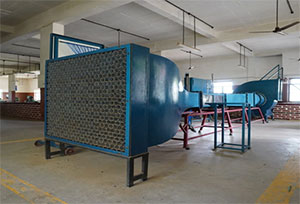
02AERODYNAMICS LAB
The Aerodynamics Laboratory is the state of the art in the department of Aeronautical Engineering which provides good practical knowledge on Aerodynamics. Using the facilities in the laboratories, the aerodynamics experiments on various models such as two dimensional airplane wing, circular cylinder, sphere, automobile models can be conducted. Wind tunnel and water channel facilities can be used to conduct experiments for different flow conditions. Unique subsonic wind tunnel facility of test section 300mmx300mm with test section speed of 70m/s is available in the laboratory. This facility helps students and teachers in the field of researches development of wing structure and blade design. Mechanical Engineering and civil engineering students of our college and nearby colleges utilizing this facility for some research activities). A batch of thirty students can accommodate at a time in this facility.
List of Equipments
- Subsonic Wind Tunnel
- Vertical Manometer
- U tube Manometer
- Force Measurement Mechanism
- Smoke Tunnel
- Hellesaw Apparatus
- Aero foil Models
03Aircraft Structures Lab
This laboratory is equipped with cantilever beam setup, wagner beam, vibration of beam and photo elastic technic. Student will be able to know the load distribution in the structural members and causes for deformation produced in a structural component. This will immensely help the students to enrich their knowledge in the design of various aircraft structural components, namely, wing fuselage, landing gear, control surfaces etc. In addition, the structures laboratory provides facilities for testing of materials. The structures laboratory is used to enhance the learning experience of undergraduate students by encouraging them to undertake projects.
List of Equipments
- Constant strength beam
- Combined Bending and torsion
- Column testing
- Free, forced and torsional vibration
- Wagner beam
- Shear Center- Open section
- Flexibility Matrix
- Max well Reciprocal theorem
- Flexure Rigidity
04Airframe Maintenance and Repair Lab
The main objective of the Aircraft Structures Repair lab is to maintain the structure by restoring the damage. In this laboratory, we have equipment’s for welding and riveting, construction of wooden components. Students can develop skills in repairing composite structures, aircraft fabrics and sandwich panels. In this lab students will learn the processes of sheet metal forming and inspection of control cables.
List of Equipments
- Welding Apparatus
- Gas welding
- Tig welding
- Arc Welding
- Riveting
- Forming
- Flaring
- Fabric Patch Repair
- Composite Manufacturing
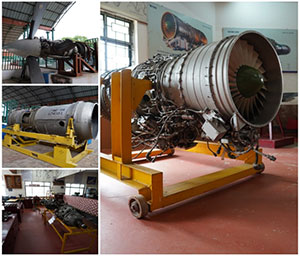
06Propulsion Lab
This Laboratory is intended to teach the basics of Aircraft Propulsion, Heat transfer, Combustion and Compressible flow in various components of Gas Turbine. Heat transfer studies fulfill the students' understanding about the relation between heat transfer and engine operation and how they are implemented in the engine components. Aerodynamic studies over the blade and nozzle exit helps students' to obtain knowledge in components design. Combustion studies provide good understanding of combustion chamber design and performance. Important Facilities of this lab are I.C Engine – 2 Stroke and 4- Stroke, Bomb Calorie meter, Valve timing 4-Stroke Engine,4 stroke Diesel engine with mechanical loading, Single cylinder petrol engine, Propeller Performance Analysis Setup, Jet Engine Bay etc.
List of Equipments
- Natural Convection
- Forced convection
- Wind tunnel
- I.C Engine – 2 Stroke and 4- Stroke
- Bomb Calorie meter
- Valve timing 4-Stroke Engine
- Port Timing Two Stroke Engine.
- 4 stroke Diesel engine with mechanical loading
- Single cylinder petrol engine
- Propeller Performance Analysis Setup
Additional Facilities
Aircraft Maintenance Hanger
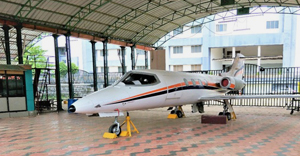
01LEAR JET 25B
The Learjet 25 is an American ten-seat (two crew and eight passengers), twin-engine, high-speed business jet aircraft manufactured by Learjet. It is a stretched version of the Learjet 24. The first Model 25 flew on August 12, 1966, and the first delivery was in November 1967.
Specifications
- Crew: Two pilots.
- Capacity: 8 passengers.
- Length: 47 ft 7 in (14.50 m)
- Wingspan: 35 ft 7 in (10.84 m)
- Height: 12 ft 3 in (3.73 m)
- Wing area: 231.77 sqft (21.53 m2)
- Airfoil: NACA 64A109
- Empty weight: 7,640 lb (3,645 kg)
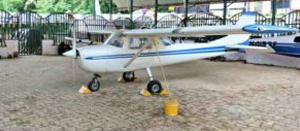
02CESSNA 152
The Cessna 152 is an American two-seat, fixed tricycle gear, general aviation airplane, used primarily for flight training and personal use. It was based on the earlier Cessna 150, including a number of minor design changes and a slightly more powerful engine running on 100LL aviation gasoline.
Specifications
- Crew: one
- Capacity: one passenger (120 lb (54 kg))
- Length: 24 ft 1 in (7.34 m)
- Wingspan: 33 ft 4 in (10.16 m)
- Height: 8 ft 6 in (2.59 m)
- Wing area: 160 sq ft (15 m2)
- Empty weight: 1,081 lb (490 kg)
- Gross weight: 1,670 lb (757 kg)
- Powerplant: 1 × Lycoming O-235-L2C flat-4 engine, 110 hp (82 kW)
- Propellers: 2-bladed fixed pitch, 69-inch (180 cm) McCauley or 72-inch Sensenich propeller
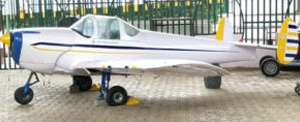
03ERCO Ercoupe
The ERCO Ercoupe is a low-wing monoplane aircraft that was designed and built in the United States. It was first manufactured by the Engineering and Research Corporation (ERCO) shortly before World War II; several other manufacturers continued its production after the war.
Specialties
- Crew: one
- Capacity: one passenger
- Length: 20 ft 9 in (6.32 m)
- Wingspan: 30 ft 0 in (9.14 m)
- Height: 5 ft 11 in (1.80 m)
- Wing area: 142.6 sq ft (13.25 m2)
- Airfoil: NACA 43013[49]
- Powerplant: 1 × Continental C75-12 4-cylinder air-cooled horizontally-opposed piston engine, 75 hp (56 kW)
- Propellers: 2-bladed variable-pitch propeller

The Kerala State Productivity Council celebrated National Productivity Day on 12th February 2025 and observed National Productivity Week from February 12 – 18 across India. The First Year B.Tech students participated in various competitions and won prizes. Mehfil Miras (S2 B.Tech Aeronautical Engineering) and Vimal K (S2 B.Tech CSE Cyber Security) claimed the First Prize in the Debate Competition, winning a cash award of ₹2000 and certificates. Rohan Ram (S2 B.Tech CSE Data Science) and Ambady K B (S2 B.Tech CSE Cyber Security) secured Second Prize for Concept Writing and received a cash prize of ₹1000 and certificates.Sivani Balagopal (S2 B.Tech CSE Cyber Security) and Nandakishor M S (S2 B.Tech Agriculture Science) earned Second Prize, receiving a cash award of ₹1000 and certificates in poster Making.

Final year Aeronautical students won second position with a cash prize of Rs.4000/- in the project expo JSITE-2024 organized by JCET for their project titled "Investigation of Retro-Propulsion Based Flow field Around Re-Entry Crew Modules". The team members are Mr.Anaagh K, Mr. Sayanth R, Mr. Vishnu Sankar V and Ms. Hridya Nambiar.
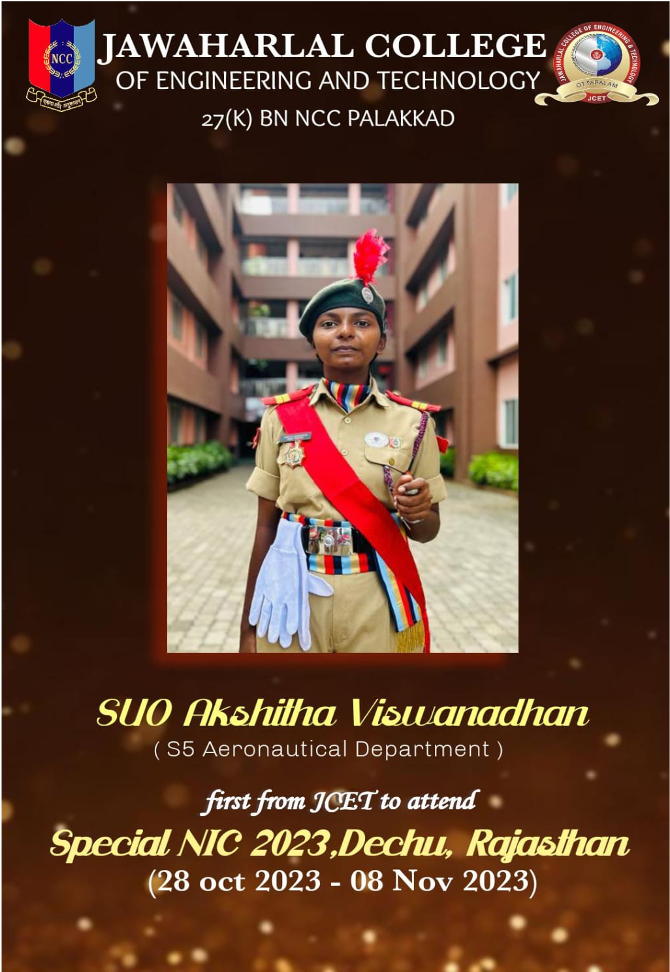

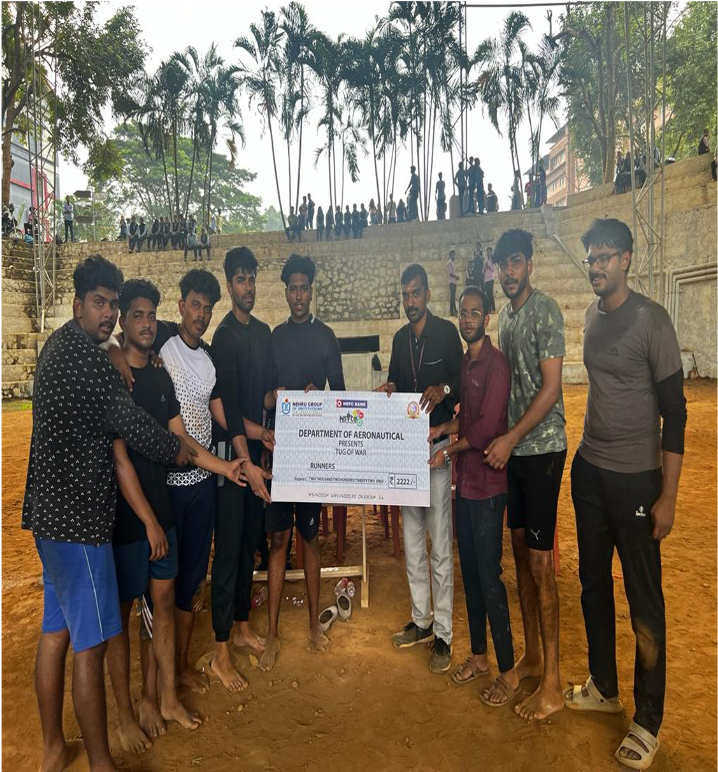
S5 Students of Aeronautical won runner up trophy in TUG - OFF war competitions conducted as apart of NSITE 2023
RESEARCH PUBLICATIONS
2023-2024 Academic Year
| Sl.No | Author | Title of the Paper | Name of the Journal/ Conference | Month and Year of Publication | Volume No. / S. No / ISSN No. / DOI No. |
|---|---|---|---|---|---|
| 01 | Prajeesh Raj V | Intergranular corrosion behaviour of neobium stabilized cast and hot rolled duplex stainless steel | International Conference on recent advancements in material science and technology | Jan-24 | ISBN: 978-93-95898-91-1 |
2022-2023 Academic Year
| Sl.No | Author | Title of the Paper | Name of the Journal/ Conference | Month and Year of Publication | Volume No. / S. No / ISSN No. / DOI No. |
|---|---|---|---|---|---|
| 01 | Ajith V S, K. G Jolly | Hybrid Optimization Based Multi-Objective Path Planning Framework for Unmanned Aerial Vehicles | Cybernetics and Systems | (January) 2023 | DOI: 10.1080/01969722.2022.2157607 |
| 02 | Ajith V S, K. G Jolly | Hybrid deep learning for object detection in drone imagery: a new metaheuristic based model | Multimedia Tools and Applications | 2023 | DOI: 10.1007/s11042-023-15785-0 |
| 03 | Dr. T. Ahilan1, G Sujesh and KSS Rao Yarrapragada | Wind turbine power prediction via deepneural network using hybrid approach | Journal of Power and Energy, Institute of Mechanical Engineers | Sep-22 | DOI: 10.1177/09576509221125863 |
BOOK PUBLICATIONS
| Sl.No | Name of the teacher | Title of the book/chapters published | Academic Year | ISBN No. |
|---|---|---|---|---|
| 01 | Dr.B.R.Senthil Kumar, Dr.V.Lakshminarayanan, Dr.C.R.Raajeshkrishna | Modelling And Simulating The Manufacturing Of Gear In Rolling Process | 2022-2023 | 978-93-5780-725-8 |
| 02 | Dr.B.R.Senthil Kumar, Dr.V.Lakshminarayanan, Dr.C.R.Raajeshkrishna | Analysis of Coil Spring for Aircraft and Aerospace Applications | 2022-2023 | 978-93-5773-889-7 |
| 03 | Mr. Kumaraswamy A, Mr. Ajith V S, Mr. Mohamed Sameer T K | Text Book On Mechatronics | 2022-2023 | 978-93-5757-108-1 |
| 04 | Dr. K Sathish Kumar, Dr.B.R.Senthil Kumar, Dr.V.Lakshminarayanan | Aerodynamic Load Analysis of Wind Turbine | 2023-2024 | - |
| 05 | Dr. Sujesh G, Ms. Rinchu P | Effect of Strain Rate on Nano Filled Composite Materials | 2023-2024 | E-Book |
PATENT PUBLICATIONS
| Sl.No | Title of patent | Author | Patent Status | Patent number and | Publication Date |
|---|---|---|---|---|---|
| 01 | New augmentation process for DOE construction for biodiesel performance evaluation in IC engines | Dr.Sujesh G, Mr. Ajith V S | Published | 202241015261 A | 25-03-2022 |
| 02 | Wild Animal Repellent System in Fields Using AI & IoT | Mr. Mohamed Sameer T K | Published | 202341031389 A | 16-06-2023 |
| 03 | Bioplastic sheet from Banana waste to replace single use plastic | Mr. John George | Published | 202341031404 A | 16-06-2023 |
STUDENTS WITH ABOVE 9 CGPA 2019-2023 BATCH

CGPA 9.5 AJAYKRISHNAN P K
JCE19AO010
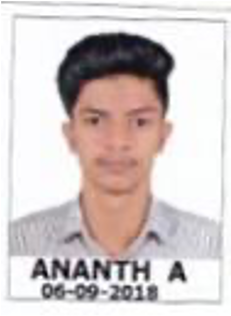
CGPA 9.5 AJAYKRISHNAN P K
JCE19AO010
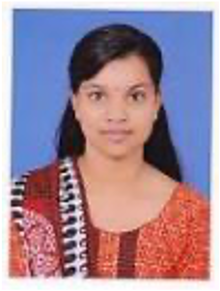
CGPA 9.5 AJAYKRISHNAN P K
JCE19AO010
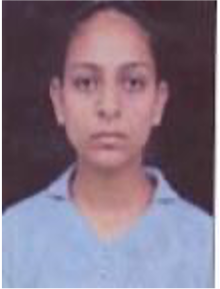
CGPA 9.5 AJAYKRISHNAN P K
JCE19AO010
INTERNSHIP DETAILS
45 STUDENTS FROM 2021- 2025 BATCH HAS ATTENDED A MINIMUM 1 WEEK INTERNSHIP DURING THE MONTH OF MAY/JUNE 2023
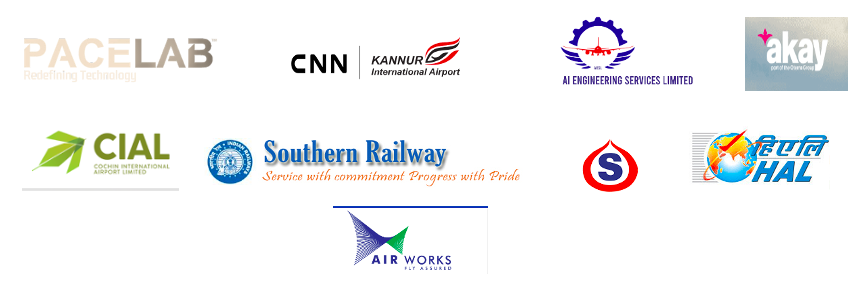
RANK LIST KTU 2016-20 BATCH
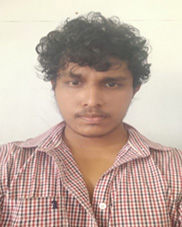
3rd Rank Aswin K P
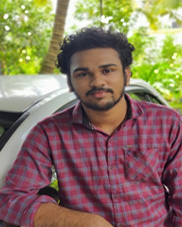
4th Rank Sooraj Kumar A
RANK LIST KTU 2015-19 BATCH

1st Rank Prince Peter
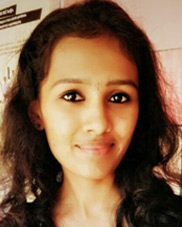
3rd Rank Veena Vijayakumar
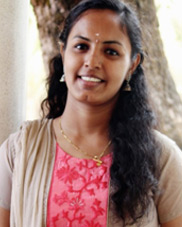
4th Rank Vani PV
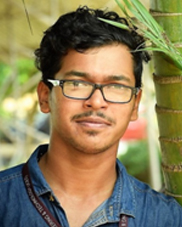
6th Rank Jishnu Thuluvath
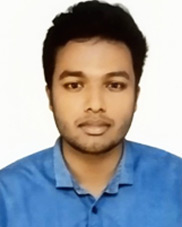
8th Rank Shaheen PB
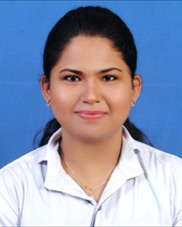
9th Rank Lekshmi S
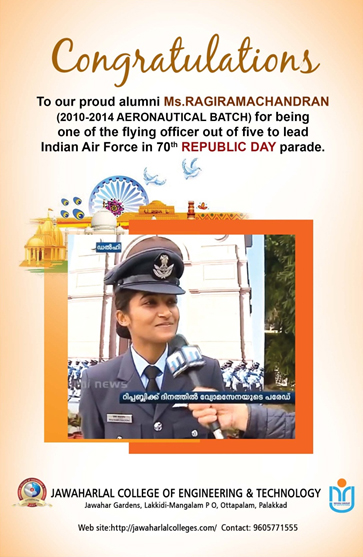
PAPER PUBLICATIONS
List of paper publications by faculties
(2019-20)
| Sl.No | Author | Title of the Paper | Name of the Journal/ Conference | Year of Publication | Volume No. / S. No / ISSN No. / DOI No. |
|---|---|---|---|---|---|
| 1 | Dr.V Lakshminarayanan | Investigation of Integrated Flow Channel for the Performance Analysis of the PEMFC | INTERNATIONAL JOURNAL OF CREATIVE RESEARCH THOUGHTS | 2021 | Volume 9, Issue 1 ISSN: 2320-2882 |
| 2 | Mr. John George | Investigation of Integrated Flow Channel for the Performance Analysis of the PEMFC | INTERNATIONAL JOURNAL OF CREATIVE RESEARCH THOUGHTS | 2021 | Volume 9, Issue 1 ISSN: 2320-2882 |
| 3 | Mr. Ajith V.S. | Investigation of Integrated Flow Channel for the Performance Analysis of the PEMFC | INTERNATIONAL JOURNAL OF CREATIVE RESEARCH THOUGHTS | 2021 | Volume 9, Issue 1 ISSN: 2320-2882 |
| 4 | Mr. Prajeesh Raj | NUMERICAL ANALYSIS OF INTERDIGITATED FLOW CHANNEL OF PEM FUEL CELL | INTERNATIONAL JOURNAL OF ADVANCE RESEARCH AND INNOVATIVE IDEAS IN EDUCATION | 2020 | Volume-6, Issue-6 ISSN: 2395-4396 |
| 5 | Mrs. Rinchu P | NUMERICAL ANALYSIS OF INTERDIGITATED FLOW CHANNEL OF PEM FUEL CELL | INTERNATIONAL JOURNAL OF ADVANCE RESEARCH AND INNOVATIVE IDEAS IN EDUCATION | 2020 | Volume-6, Issue-6 ISSN: 2395-4396 |
| 6 | Dr.V Lakshminarayanan | Numerical Investigation of 16 Cm2 Active Area of PEMFC For Performance Analysis | International Journal of Creative Research Thoughts (IJCRT) | 2020 | Volume 8, Issue 3 March 2020 ISSN: 2320-2882 |
| 7 | Mr. Kailash Karunakaran | Numerical Investigation of 16 Cm2 Active Area of PEMFC For Performance Analysis | International Journal of Creative Research Thoughts (IJCRT) | 2020 | Volume 8, Issue 3 March 2020 ISSN: 2320-2882 |
| 8 | Mr. Sujesh G | Effect of Compression Ratio on the Performance, of a Single Cylinder Diesel Engine using Multi Blended Second Generation Biofuel | International Journal of Mechanical and Production Engineering Research and Development (IJMPERD) | 2020 | Volume 10, Issue 1, pp: 133-144, ISSN: 2249-8001 |
| 9 | Mr. Sujesh G | Effect of CeO2 Nano powder as additive in WME-TPO blend to control toxic emissions from a light-duty diesel engine – An experimental study | Fuel | 2020 | Volume 278, 15 October 2020, 118177, ISSN: 0016-2361 |
| 10 | Mrs. Ambily P N | Numerical Investigation of 16 Cm2 Active Area of PEMFC For Performance Analysis | International Journal of Creative Research Thoughts (IJCRT) | 2020 | Volume 8, Issue 3 March 2020 ISSN: 2320-2882 |
| 11 | Mr. John George | Enhancement of cooling rate using nanofluid and hybrid nanofluid in cooling hot titanium plate | Materials Today: Proceedings | June 2020 | ISSN: 2214-7853 |
| 12 | Mr. Sujesh G | WME-TPO BLEND WITH CEO2 ADITIVE AS AN ALTERNATIVE TO JET A1 IN AVITION DIESEL ENGINES - AN EXPERIMENTAL APPROACH | ISTE Sponsored 6th International E-Conference on Latest Trends in Science, Engineering and Technology (ICLTSET’20) | April 2020 | ISBN NO: 978-81-910748-5-7 Page no: 95 |
| 13 | Mr. Sujesh G | EFFECT OF CEO2 NANO POWDER AS ADDITIVE IN WME-TPO BLEND TO CONTROL TOXIC EMISSIONS FROM A LIGHT-DUTY DIESEL ENGINE- AN EXPERIMENTAL STUDY | ISTE Sponsored 6th International E-Conference on Latest Trends in Science, Engineering and Technology (ICLTSET’20) | April 2020 | ISBN NO: 978-81-910748-5-7 Page no: 1 |
| 14 | Dr.V Lakshminarayanan | Numerical analysis of 16 cm2 effective area of PEMFC for performance study. | Journal of Research in Mechanical Engineering (JRME) | 2020 | Volume 6, Issue 1 ISSN: 2321-8185 |
| 15 | Mr. Mohamed Sameer T K | Numerical analysis of 16 cm2 effective area of PEMFC for performance study. | Journal of Research in Mechanical Engineering (JRME) | 2020 | Volume 6, Issue 1 ISSN: 2321-8185 |
| 16 | Mr. Kailash Karunakaran | Numerical analysis of 16 cm2 effective area of PEMFC for performance study. | Journal of Research in Mechanical Engineering (JRME) | 2020 | Volume 6, Issue 1 ISSN: 2321-8185 |
2018-19
| Sl.No | Author | Title of the Paper | Name of the Journal/ Conference | Year of Publication | Volume No. / S. No / ISSN No. / DOI No. |
|---|---|---|---|---|---|
| 1 | Mr. Sujesh G | Modeling and control of diesel engines: A systematic review | Alexandria Engineering Journal | 2018 | Volume 57, ISSUE 4, pp: 4033-4048, ISSN: 1110-0168 |
2017-18
| Sl.No | Author | Title of the Paper | Name of the Journal/ Conference | Year of Publication | Volume No. / S. No / ISSN No. / DOI No. |
|---|---|---|---|---|---|
| 1 | Mr.Ajith V S | Design and structural analysis of Wing-fuselage bracket of a UAV | International Journal of Creative Research Thoughts (IJCRT) | 2017 | Volume 5, Issue 4 November 2017 | ISSN: 2320-2882 |
| 2 | Mr.Mohamed Sameer T K | Modelling of MEMS inertial sensors and accuracy improvement using extended kalman filter | International Journal of Creative Research Thoughts (IJCRT) | 2017 | Volume 5, Issue 4 November 2017 | ISSN: 2320-2882 |
| 3 | Mr.Kavinkumar K | Mechanical characterisation of Glass/epoxy, carbon/epoxy, and hybrid composite | International Journal of Creative Research Thoughts (IJCRT) | 2017 | Volume 5, Issue 4 November 2017 | ISSN: 2320-2882 |
2016-17
| Sl.No | Author | Title of the Paper | Name of the Journal/ Conference | Year of Publication | Volume No. / S. No / ISSN No. / DOI No. |
|---|---|---|---|---|---|
| 1 | Mr. Sujesh G | DESIGN OPTIMIZATION OF DUEL BELL NOZZLE FOR THE IMPROVEMENT OF PERFORMANCE WITH THE HELP OF CFD TOOLS | 2nd International conference on modelling, simulation and control (ICMSC-2017) | April 2017 | Volume 1 |
Funded Projects
Financial assistance for Student Project scheme of KSCSTE
| Sl.No | Topics | Amount |
|---|---|---|
| 1 | Synthesis and Characterization of Nano Coating as Thermal Insulator over Aerospace Grade Titanium Plate. | 10,000/- |
| 2 | Experimental Investigation of Performance an Emission Characteristics of Biofuel Extracted from Algae. | 10,000/- |
| 3 | Pre Emptive Virtual Framework Support For Individual Piloting (PRO PILOT). | 10,000/- |
| 4 | Synthesis, Stability and Propulsion Performance of Nanofluid Fuel. | 9,999/- |
REPORT
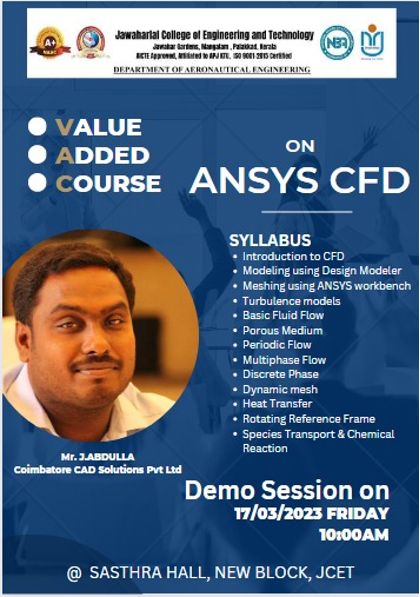
Department of Aeronautical Engineering, JCET was organized a demo session on ANSYS-CFD as part of Value Added Course in association with Coimbatore Cad Solutions Pvt. Ltd. on 17/03/2023. The program was arranged at Sasthra Hall, JCET and organized especially for second and third year Aeronautical Engineering students of Jawaharlal College of Engineering and Technology, Lakkidi. About 107 participants were attended the session.
Mr. Mohamed Sameer T K, Assistant Professor, Department of Aeronautical Engineering, has delivered the welcome address. He has given a brief introduction about the resource persons.
Mr. J Abdulla and Mr. Jaseem from Coimbatore Cad Solutions Pvt. Ltd. were handled the session. Mr. Jaseem had given a brief overview about Coimbatore Cad Solutions Pvt. Ltd. and various courses offered by them. Mr. J Abdulla has explained the importance and job opportunies of ANSYS-CFD software in mechanical, aeronautical and automobile sectors. He discussed about the analysis tools available in the software. He also demonstrated the design and flow analysis of an aerofoil. He agreed to conduct the Value Added Course on ANSYS-CFD in the college itself by utilizing the analysis lab facility with a nominal fee.
After the session, the students were given time to interact with the resource person. Google form link is shared to the participants for recording their feedback.
Dr. Sujesh G, Associate Professor, Aeronautical Department has delivered the vote of thanks. He conveyed gratitude to the Management, Principal, H.O.D, staff members and students for their cooperation in making a successful event.
News & Events
Environmental Visit to Nelliampathy

Space Quiz Competition

In celebration of National Space Day, the Department of Aeronautical Engineering organized a Space Quiz, which saw enthusiastic participation from several students. The quiz aimed to test and enhance students' knowledge of space technology, scientific advancements, and India's achievements in space exploration.
The quiz covered a range of topics, from the history of space exploration to the latest developments in space missions. Students from all semesters competed keenly, demonstrating their understanding and passion for the subject.
The highlight of the event was the prize distribution ceremony, where the winners were honored by the esteemed Mr. M. Narayanan Namboodiripad, former Associate Director of the Vikram Sarabhai Space Centre (VSSC) under ISRO. Mr. Namboodiripad's presence added a significant value to the event, and his words of encouragement to the participants were truly inspiring. The quiz was a resounding success, fostering a spirit of curiosity and learning among the students, and highlighting the importance of space science in shaping our future.
National Space Day Celebration

The Department of Aeronautical Engineering marked National Space Day with a grand celebration, featuring the esteemed Mr. M. Narayanan Namboodiripad, former Associate Director of the Vikram Sarabhai Space Centre (VSSC) under ISRO. Mr. M. Narayanan Namboodiripad delivered an insightful talk on "Indian Space Technology and Scientific Research: From Sounding Rockets to Moon, Mars, and Beyond," providing the audience with a comprehensive overview of India's remarkable achievements and future aspirations in space exploration.
The event commenced with a warm welcome by Dr. Shine K., Principal In-Charge and Head of the Department of Mechanical Engineering. Dr. Radhakrishnan K., Advisor, NGI, had the honor of presenting a memento to Mr. M. Narayanan Namboodiripad, as a token of appreciation for his invaluable contribution to Indian space research.
Dr. Sujesh G., Head of the Aeronautical Engineering Department, facilitated the gathering. The vote of thanks was delivered by Ms. Mithila Sethumadhavan, Secretary of Hardflyers. The program was coordinated by Mr. Mohamed Sameer T.K., Assistant Professor of the Aeronautical Engineering Department.
In addition to the keynote address, the celebration featured the distribution of prizes to the winners of the Space Quiz competition and the Mach Book poster design contest. The chief guest, Mr. M. Narayanan Namboodiripad, had the privilege of awarding these prizes, further inspiring the students to excel in the field of space technology.
HARDFLYERS_ STUDENT ASSOCIATION

The inaugural program of Hardflyers, the Student Association of the Department of Aeronautical Engineering, was held on August 16, 2024. The event began with a warm welcome by Ms. Mithila Sethumadhavan, Secretary of Hardflyers, The event was officially inaugurated by Mr. Manu Mamachan, Team Lead at Aerovative Technologies. In his Inaugural Address, Mr. Mamachan shared his journey in the aerospace sector, offering inspiration and motivation to the aspiring aeronautical engineers in the audience. He shared his extensive experience in the field of aeronautics, addressing the students' questions and providing practical advice on navigating a career in this dynamic industry.
Presidential Address was delivered by Dr. K Radhakrishnan, Advisor, NGI. A Special Address was given by Dr. N Gunasekaran, Principal of JCET. Dr. Sujesh G, Head of the Department of Aeronautical Engineering felicitated the function. The Vote of Thanks was proposed by Ms. Shalima L Madhu, Joint Secretary of Hardflyers.
Alumni Interaction 2024

The Department of Aeronautical Engineering at JCET, in collaboration with the Aeronautical Student Association "Hardflyers," organized an insightful alumni interaction session on 24th August 2024. The event featured Ms. Chaithanya, an esteemed Aeronautical Officer from the Directorate General of Civil Aviation (DGCA), Bangalore. Ms. Chaithanya, an alumnus of JCET, shared her extensive experience in the aviation industry, having worked with prominent organizations such as the Aeronautical Development Agency, Turbo Energy Limited, and DGCA.
During the session, Ms. Chaithanya delivered an engaging talk on the "Role of DGCA in Indian Aviation," providing students with a comprehensive understanding of the regulatory body's significance in maintaining safety and standards in the aviation sector. Her insights into the industry, drawn from her diverse professional background, offered valuable guidance to aspiring aeronautical engineers.
In addition to the interaction, the event also included a felicitation ceremony, where the toppers of the May 2024 KTU examinations from various batches were honoured for their academic achievements. This recognition aimed to motivate students to continue striving for excellence in their studies.
Industry Awareness for Engineering Students in Aviation Sector

Aeronautical Department student association Hardflyers organized an interactive session on Industry Awareness for Engineering Students in Aviation Sector on 27-03-2024. Proud alumni of Department of Aeronautical Engineering, Mr. Vishnu S Nair, Team lead and Lead Engineer, Collins Aerospace, Bangalore, handled the session. Dr. Sujesh G, Association vice president delivered introductory speech. Head of the Department, Dr. V Lakshminarayanan delivered the welcome note and association secretary Mr. Moideen Siyam proposed vote of thanks.
Talk on Job Opportunities for Aeronautical Graduates
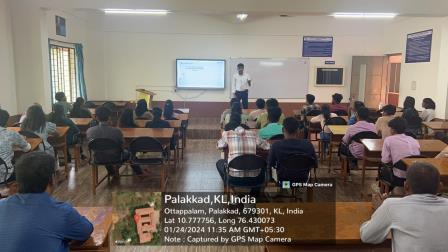
Department of Aeronautical Engineering, JCET was organized a demo session on “Job Opportunities for Aeronautical Graduates” as part of Value Added Course in association with GLOINNT Solutions. on 24/01/2024.
Mr. Lokesh Bellamkonda, Lead – Learning and Development, GLOINNT Solutions were handled the session. He explained the importance and job opportunies of in technical publication in aeronautical and automobile sectors. He discussed about the writing tools available in the software. He also demonstrated the design of Aircraft Maintenance Manual, Illustrated Parts Catalogue, Structural Repair Manual ,Component Maintenance Manual, Trouble Shooting Manual, Aircraft Fault Isolation, Wiring Diagram Manual, Service Bulletins, Engine Maintenance Manual Illustrated Tools and Equipment Manual ,Supplemental Manuals for cabin modification,System Description,Qualification Test Procedures, Design Review Reports,Creation of Design support documents,E-Catalogue,Engine Service Manual, User Manual ,Operation Manual, Drivers Manual,Safety, Instructions,Assembly Instructions.
Placements
PLACED STUDENT 2020-2024 BATCH
Congratulations to all the students who got placed in various reputed companies

PLACED STUDENT 2020-2024 BATCH
Congratulations to all the students who got placed in various reputed companies

Lecture Notes
Program Educational Objectives (PEO)
Excellence in Career To prepare and provide student with an academic environment for students to excel in postgraduate programs or to succeed in industry / technical profession and the life-long learning needed for a successful professional career in Aeronautical Engineering and related fields.
Professional Effectiveness and Contribution to Society To provide students with a solid foundation in mathematical, scientific and engineering fundamentals required to solve engineering problems and also to pursue higher studies (Core Competence).
Continuing Education To train students with good scientific and engineering breadth so as to comprehend, analyse, design, and create novel products and solutions for the real life problems.
Exercising Leadership To inculcate in students professional and ethical attitude, effective communication skills, teamwork skills, multidisciplinary approach, and an ability to relate engineering issues to broader social context (Professionalism).
Program Specific Outcomes (PSOs)
The students will be able to
- Utilize the knowledge of aeronautical/aerospace engineering in innovative, dynamic and challenging environment for design and development of new products.
- Demonstrate the knowledge of advanced software tools for design specification, development such as fabrication, analysis such as testing and operation of the physical systems, components and processes involved in aeronautical engineering.
Vision
- To build a strong community of dedicated graduates with expertise in the field of Aeronautical Engineering to meet the Industrial needs and to face the ever changing requirements in aeronautical and aerospace industry.
Mission
- To provide excellent technical education and basics of all fundamental methods to achieve professional success in their careers.
- To inculcate research and development activities to meet the technological changes of the society
- To inspire students to become successful entrepreneurs and educate them professional ethics, human values for the better society.
- To groom industry ready aeronautical engineers through industry institute relationship and value added industrial programs for lifelong learning.
SEMESTER 1
|
S.No. |
SEMESTER 1 |
NAME OF THE BOOK |
|
1 |
MAT101 Linear Algebra & Calculus |
H Anton, I Biven, S Davis, Calculus, Wiley 10th edition ,2015. |
|
2 |
PH110 Engineering Physics B |
Dr K P Varkey, Prof V S Nithyadas, Prof A K Haridas, Prof A Athmajan |
|
3 |
EST100 Engineering Mechanics |
J Benjamin, Engineering Mechanics Pentex publication |
|
4 |
PH120 Engineering Physics Lab |
S L Gupta & Dr V Kumar, Practical Physics With Viva Voice, Pragati Prakashan Publishers, Revised Edition 2014 |
|
5 |
EST120 Basics of Civil& Mechanical Engineering |
Rangwala, S. C., Essentials of Civil Engineering, Charotar Publishing House, Benjamin, J., Basic Mechanical Engineering, Pentex Books,9th Edition,2018 |
|
6 |
HUT101 Life Skills |
Ramesh.S, Vishnu R G, Life Skills of Engineers, Ridhaima Publication, Trivandram |
SEMESTER 2
|
S.No. |
SEMESTER 2 |
NAME OF THE BOOK |
|
1 |
MAT102 Vector Calculus , Differential Equations &Transforms |
1) H Anton, I Biven, S Davis, Calculus, Wiley 10th edition , 2015. |
|
2 |
CYT100 Engineering Chemistry |
Dr Muhammed Arif M, Smt Kavitha P Nair, Dr Annette Fernandence |
|
3 |
EST110 ENGINEERING GRAPHICS |
P. I. Varghese, Engineering Graphics published by V I P Publishers |
|
4 |
HUT102 Professional Communication |
M A Ashraf Rizvi, Professional English, Effective Technical Communication, Tata McGraw-Hill Publishers |
|
5 |
CYL120 Engineering Chemistry Lab |
Prof V N Madhusudhan , HOD Deparment of Chemistry, JCET , Lakkidi, Ottapalam |
|
6 |
EST130 Basics of Electrical &Electronics Engineering |
Basic Electrical Engineering by T S Rejin The New Media space publication, Chinmoy Saha, Arindham Halder and Debarati Ganguly, Basic Electronics - Principles and Applications, Cambridge University Press, 2018. |
|
7 |
EST102 Programming in C |
Asok N Kamthane, Pearson, Programming in C |
SEMESTER 3
|
S.No. |
SEMESTER 3 |
NAME OF THE BOOK |
|
1 |
MAT201 PARTIAL DIFFERENTIAL EQUATION AND COMPLEX ANALYSIS |
B.S Grewal ,Higher Engineering Mathematics, Khanna Publishers,44th Edition,2018 |
|
2 |
AOT201 MECHANICS OF MATERIALS AND AIRCRAFT MATERIALS |
1) James Gere & Barry Goodno, “Mechanics of Materials”, Thomson-Engineering, 7th edition, 2008. |
|
3 |
MET203 MECHANICS OF FLUIDS |
R.K. Bansal , A Textbook of Fluid Mechanics and Hydraulic Machines . |
|
4 |
AOT205 MECHANICS OF FLIGHT AND AIRCRAFT BASICS |
Clancy, L.J., “Aerodynamics”, Pitman, 1986, |
|
5 |
HUT200 PROFESSIONAL ETHICS |
M Govindan S Natarajan & V S Senthil ,Engineering Ethics ,PhI Learning House ,Delhi |
|
6 |
MCN201 SUSTAINABLE ENGINEERING |
1.Allen D T & Shonnard D R, "Sustainabilty Engineering Concepts, Design and case studies, Prentice Hall, 2. Shibu Krishnan, Introduction to Sustainable Engineering, PKC books |
SEMESTER 4
|
S.No. |
SEMESTER 4 |
NAME OF THE BOOK |
|
1 |
MAT202 PROBABILITY, STATISTICS AND NUMERICAL METHODS |
Jay L.Devore , Probability and Statistics for Engineering and sciences,8th edition cengage 2012, |
|
2 |
AOT202 THERMODYNAMICS |
P K Nag, Engineering Thermodynamics ,Tata McGraw-Hill Education |
|
3 |
AOT204 AERODYNAMICS I |
1. Houghton, E.L., and Caruthers, N.B., "Aerodynamics for Engineering students", Edward Arnold Publishers Ltd., London, 1989. |
|
4 |
AOT206 AIRCRAFT STRUCTURES I |
T.H.G Megson "Aircraft structures for engineering students "Elsevier Aerospace engineering, 4th edition, 2007, 2. Strength of materials by Dr. R. K Bansal, Laxmi publication pvt. Ltd. |
|
5 |
EST200 DESIGN & ENGINEERING |
1) Yousef Haik, Sangarappillai Sivaloganathan, Tamer M. Shahin, Engineering Design Process, Cengage Learning 2003, Third Edition, ISBN-10: 9781305253285, |
|
6 |
MCN202 CONSTITUTION OF INDIA |
1 D D Basu, Introduction to the constitution of India, Lexis Nexis, New Delhi, 24e, 2019 |
|
2 PM Bhakshi, The constitution of India, Universal Law, 14e, 2017 |
SEMESTER 5
|
S.No. |
SEMESTER 5 |
NAME OF THE BOOK |
|
1 |
AO 301 - AERODYNAMICS II |
1. Anderson, J. D, "Modern Compressible Flow", McGraw-Hill & Co., 2002. |
|
2 |
AO303 - AIRCRAFT STRUCTURES II |
T.H.G Megson "Aircraft structures for engineering students"Elsevier Aerospace engineeing, 4th edition, 2007 |
|
3 |
AO305 - FLIGHT MECHANICS |
Clancy, L.J., “Aerodynamics”, Pitman, 1986, Perkins, C.D., and Hage, R.E., “Airplane Performance stability and Control”, John Wiley & |
|
4 |
AO307 - AIRCRAFT GENERAL ENGINEERING AND MAINTENANCE PRACTICE |
Kroes Watkins Delp, Aircraft Maintenance and Repair, McGraw Hill, New York, 1993 |
|
5 |
AO309 - EXPERIMENTAL STRESS ANALYSIS |
1.Sadhu Singh, "Experimental Stress Analysis", Khanna Publishers, New Delhi |
|
6 |
ME367 - NON - DISTRUCTIVE TESTING |
1. Dr. A Anderson , Non-Destructive Testing , Airwalk publications |
|
7 |
AO 361 - FUELS AND COMBUSTION |
1. Samir Sarkar, Fuels and combustion, Universities press |
SEMESTER 6
|
S.No. |
SEMESTER 6 |
NAME OF THE BOOK |
|
1 |
AO302 - PROPULSION-II |
1. Mathur, M.L., and Sharma, R.P., “Gas Turbine, Jet and Rocket Propulsion”, Standard Publishers and Distributors, Delhi, 1988. |
|
2 |
AO304 - VIBRATION AND AERO ELASTICITY |
2. Sutton, G.P., “Rocket Propulsion Elements”, John Wiley & Sons Inc., New York, 5th Edition, 1993. |
|
3 |
AO306 - AVIONICS AND CONTROL SYSTEMS |
1. Collinson.R.P.G. "Introduction to Avionics", Chapman and Hall. |
|
4 |
ME322 - HEAT TRANSFER |
1.S.C. Sachdeva, “Fundamentals of Engineering Heat & Mass Transfer”, Wiley Eastern Ltd., New Delhi,1981. |
|
5 |
HS300 - PRINCIPLES OF MANAGEMENT |
1.Rajesh Kumar R, Principles of Management , Jyothis Publishers. |
|
6 |
AO364 - ACTUATORS AND CONTROLS IN AIRCRAFT |
1. Handbooks of Airframe and Power plant Mechanics, US dept. of Transportation, Federal Aviation Administration, The English Book Store, New Delhi. 2. Pallet, E.H.J, "Aircraft Instruments & Principles", Pitman & Co |
|
7 |
AO368 - EXPERIMENTAL AERODYNAMICS |
1. Rathakrishnan. E, “Instrumentation, Measurement and Experiments in Fluids”, CRC Press, London, 2007 |
SEMESTER 7
|
S.No. |
SEMESTER 7 |
NAME OF THE BOOK |
|
1 |
AO401 Computational Fluid Dynamics |
John F Wendt by Computational Fluid Dynamics ,Springer. |
|
2 |
AO403 Aircraft System and Instruments |
1.Michael Kroes, Thomas W. Wild , “Aircraft Power Plants”, McGraw-Hill. 2.Pallet, E.H.J., “Aircraft Instruments & Principles”, Pitman & Co. 3.Lalit Gupta & Dr. O.P. Sharma, "Aircraft Systems", Jain Book Agency |
|
3 |
AO405 Finite Element Method |
1. Dr. S Senthil by Finite element Analysis , Lakshmi Publications |
|
4 |
AO407 Composite Materials |
Isaac M Daniel, Engineering mechanics of composite materials |
|
5 |
AO409 Wind Tunnel Techniques |
1. Rathakrishnan. E, “Instrumentation, Measurement and Experiments in Fluids”, CRC Press, London, 2007 |
|
6 |
AO465 Industrial Aerodynamics |
1. Blevins R.D “Flow Induced Vibrations”, Van Nostrand, 1990 2. Calvert N.G “Wind Power Principles”, Charles Griffin & Co London, 1979 2. Sachs P “Wind Forces in Engineering”, Pergamon Press, 1988 3. Scorer R.S “Environmental Aerodynamics”, Ellis Harwood Ltd, England, 1978 |
SEMESTER 8
|
S.No. |
SEMESTER 8 |
NAME OF THE BOOK |
|
1 |
AO402 Rocketry and Space Mechanics |
G.P. Sutton, “Rocket Propulsion Elements”, John Wiley & Sons Inc., New York, 5th Edition, 1986 |
|
2 |
AO404 Stability and Control |
Clancy, L.J., “Aerodynamics”, Pitman, 1986, Perkins, C.D., and Hage, R.E., “Airplane Performance stability and Control”, |
|
3 |
AO468 Airframe Maintenance and Repair |
KROES, WATKINS, DELP, “Aircraft Maintenance and Repair”, McGraw-Hill, New York, 1992 |
|
4 |
MA482 Applied Linear Algebra |
Gilbert Strang Linear Algebra and its Applications 4th edition,Cengage learning 2006, |
|
5 |
CE488 Disaster Management |
Andrew, S., “Environmental Modeling with GIS and Remote Sensing”, John Willey and sons 20 |
|
6 |
IE488 Total Quality Management |
M Mahajan ,Statistical Quality Control |
SUMMARY OF BOOK PUBLICATIONS
| Sl. No. | Name of the teacher | Title of the book/chapters published | Academic Year | ISBN No. |
|---|---|---|---|---|
| 1 | Dr.B.R.Senthil Kumar, Dr.V.Lakshminarayanan, Dr.C.R.Raajeshkrishna | Modelling And Simulating The Manufacturing Of Gear In Rolling Process | 2022-2023 | 978-93-5780-725-8 |
| 2 | Dr.B.R.Senthil Kumar, Dr.V.Lakshminarayanan, Dr.C.R.Raajeshkrishna | Analysis of Coil Spring for Aircraft and Aerospace Applications | 2022-2023 | 978-93-5773-889-7 |
| 3 | Mr. Kumaraswamy A, Mr. Ajith V S, Mr. Mohamed Sameer T K | Text Book On Mechatronics | 2022-2023 | 978-93-5757-108-1 |
| 4 | Dr. K Sathish Kumar, Dr.B.R.Senthil Kumar, Dr.V.Lakshminarayanan | Aerodynamic Load Analysis of Wind Turbine | 2023-2024 | |
| 5 | Dr. Sujesh G, Ms. Rinchu P | Effect of Strain Rate on Nano Filled Composite Materials | 2023-2024 | E-Book |
SUMMARY OF PATENTS
| Sl. No. | Title | Author | Patent Status | Patent number / Application Number | Date of Grant / Publication |
|---|---|---|---|---|---|
| 1 | New augmentation process for DOE construction for biodiesel performance evaluation in IC engines | Dr.Sujesh G, Mr. Ajith V S | Granted | 559007 | 29-01-2025 |
| 2 | A smart robot to manage and monitor the COVID-19 patients along with treating them by reducing the burden on medical practitioner | Mr. Ajith V S | Published | 202241046505 A | 26-08-2022 |
| 3 | Wild Animal Repellent System in Fields Using AI & IoT | Mr. Mohamed Sameer T K | Published | 202341031389 A | 16-06-2023 |
| 4 | Bioplastic sheet from banana waste to replace single use plastic | Mr. John George | Published | 202341031404 A | 16-06-2023 |
SUMMARY OF PAPER PUBLICATIONS
| Sl. No. | Authors | Title of the Paper | Journal/Conference | Month & Year | Volume/ISSN/DOI |
|---|---|---|---|---|---|
| 2024-2025 Academic Year | |||||
| 1 | A. Sivaraman, V. Saravanan, G. Sujesh, V. S. Ajith, V. Babu, K. Balaji | Performance of Supercritical Aerofoil using the CO-Flow Jet | SSRG International Journal of Mechanical Engineering ( SCOPUS INDEXED ) | 2025-05-01 | Volume 12 Issue 5 ISSN: 2348-8360 https://doi.org/10.14445/23488360/IJME-V12I5P103 |
| 2 | T K. Mohamed Sameer, D. Susitra | Autonomous Landing of Unmanned Aerial Vehicles: Hybrid Metaheuristic Aided Detection and Extended Kalman Filter for Localization | Wireless Personal Communications (Science Citation Indexed - SCI) | (July) 2024 | Vol. 137, Issue-02, 2024 pp. 707-732 ISSN: 2348-8360/ DOI: 10.1007/s11277-024-11287-w. (WOS) |
| 3 | Dr. Sujesh G, Ms. Rinchu P, Mr. Prajeesh Raj V | Comparative Analysis of Performance and Exhaust Emissions from Jet A1 Blends with Various Aviation Biofuels | International Journal for Multidisciplinary Research (IJFMR) | (October) 2024 | Volume 6, Issue 5, E-ISSN: 2582-2160, https://doi.org/10.36948/ijfmr.2024.v06i05.29230 |
| 4 | John George, M S Sreekanth | An Experimental Investigation on Synthesis, Characterization and Photothermal Conversion Efficiency of Stable Aqueous Nanofluids Containing Multiwalled Carbon Nanotubes for Direct Absorption Solar Collectors | Energy Technology (Science Citation Indexed - SCI) | 2025 | DOI: 10.1002/ente.202400784 |
| 5 | Mr.S.Akshay, Dr P. Aneesh Kumar, Mr.V.Prajeesh Raj | MICROSTRUCTURE AND WELDING BEHAVIOR OF NIOBIUM-STABILIZED DUPLEX STAINLESS STEEL UNDER LASER BEAM WELDING | Industrial Engineering Journal | (April) 2025 | ISSN: 0970-2555 Volume : 54, Issue 4, No.2 |
| 6 | Prajeesh Raj V, Shehna S, Anilu Anil, Gayathri Suresh, Revathy N B | Corrosion Resistance in Aircraft: Evaluating Zirconium and Niobium Coatings for Fasteners and Leading-Edge Protection | International Journal for Research in Applied Science & Engineering Technology (IJRASET) | (April) 2025 | ISSN: 2321-9653 Volume 13 Issue IV |
| 7 | Prajeesh Raj, Abdul Azeez, Akshay P, Arjun Anil, Fayis Khaleel | Design and Fabrication of a Modified Hoverbike | International Journal for Research in Applied Science & Engineering Technology (IJRASET) | (April) 2025 | ISSN: 2321-9653 Volume 13 Issue IV |
| 8 | Bharathwaaj Ramani, Yazan Taamneh, Nadanakumar Vinagayam, Ravishankar Sathyamurthy | Performance and Emission Characteristics of Bombyx mori Biodiesel Blends With SiO2 Nanoadditive in DI‐CI Engines | Heat Transfer ( SCOPUS INDEXED ) | 2025 | DOI: 10.1002/htj.23277 |
| 9 | Dr. Sujesh G, Hrishika G, Pravya P S, Sandra Satheesan, Surya K S | Performance Analysis Of Truncated Aerospike Nozzles: A Study On Thrust Enhancement And Weight Reduction | International Journal of Research and Analytical Reviews (IJRAR) | (March) 2025 | Volume 12, Issue 1, E-ISSN 2348-1269, P- ISSN 2349-5138 |
| 10 | Rinchu P , Shany Anil Alex, Rahul Joseph Saji, Muhammed Haseeb, Aswin Kesav P | Innovative Winglet Designs for Enhanced Aerodynamic Efficiency | International Journal of Research and Analytical Reviews (IJRAR) | (April) 2025 | Volume 12, Issue 2, E-ISSN 2348-1269, P- ISSN 2349-5138 |
| 11 | Rinchu P., Anjana K. Ashokan, Aswathy T. G, Jasmine George, Srilakshmi V. V | Surface Texture Modifications and Nose Cone Geometries: A Review of Aerodynamic Enhancements | International Journal for Research in Applied Science & Engineering Technology (IJRASET) | (March) 2025 | ISSN: 2321-9653 Volume 13 Issue III |
| 12 | Dr. Ajith V S, Amritha K, Ardra Krishna K, Arya P C, Athul Krishna S Nair | Design, Analysis and Material Optimization of Hybrid Cooling for Turbine Blades | International Journal for Research in Applied Science & Engineering Technology (IJRASET) | (April) 2025 | ISSN: 2321-9653 Volume 13 Issue IV |
| 13 | Dr. Ajith V S, Anjitha V, Keerthick K, Praveena Prasannan, Saniga Ram E | Flow Separation Analysis of a Turbine Blade NACA 63-415 | International Journal for Research in Applied Science & Engineering Technology (IJRASET) | (April) 2025 | ISSN: 2321-9653 Volume 13 Issue IV |
| 14 | Dr. Sujesh G, Rinchu P, Bharathwaaj R | The Role of Advanced Combustion Technologies to Achieve Clearer Combustion | International Conference of New-Gen Technologies for Sustainable Development (ICNGTS 2025) | (March) 2025 | ISBN: 978-93-341-4255-6 |
| 15 | Ajith V S, Sivaraman A, Babu V, Akhil C K | A Study on hybrid fuel cell system in UAVs for enhanced endurance | International Conference of New-Gen Technologies for Sustainable Development (ICNGTS 2025) | (March) 2025 | ISBN: 978-93-341-4255-6 |
| 16 | Aswant Raj, Kailash Karunakaran | Advancements in Electro-aerodynamics | National Conference on Emerging Trends in Science and Engineering (NCETSE-2025) | (January) 2025 | ISBN: 978-81-966538-1-22 |
| 17 | Srilakshmi V V, Rinchu P | Different Types of Nose Cones Used in Aircraft | National Conference on Emerging Trends in Science and Engineering (NCETSE-2025) | (January) 2025 | ISBN: 978-81-966538-1-23 |
| 18 | Alby A K, Mohamed Sameer T K | Variable Span Morphing Technology | National Conference on Emerging Trends in Science and Engineering (NCETSE-2025) | (January) 2025 | ISBN: 978-81-966538-1-1 |
| 19 | Muhammed Suhail K K, Mohamed Sameer T K | Concept of Vortex Shedding and its Effects on Aircraft, Including Ways to Minimize its Impact | National Conference on Emerging Trends in Science and Engineering (NCETSE-2025) | (January) 2025 | ISBN: 978-81-966538-1-1 |
| 20 | Aneesh K S, Mohamed Sameer T K | Energy Efficiency and Fuel Savings Through Variable Camber Aerofoils | National Conference on Emerging Trends in Science and Engineering (NCETSE-2025) | (January) 2025 | ISBN: 978-81-966538-1-1 |
| 21 | Harsha Hari, Mohamed Sameer T K | Impact of Ice Formation on Aircraft Safety and Performance | National Conference on Emerging Trends in Science and Engineering (NCETSE-2025) | (January) 2025 | ISBN: 978-81-966538-1-1 |
| 22 | Anjusha M, Mohamed Sameer T K | Advanced Technologies for Radar-Based Ice Detection Sensors | National Conference on Emerging Trends in Science and Engineering (NCETSE-2025) | (January) 2025 | ISBN: 978-81-966538-1-1 |
| 23 | Arya P C, Mohamed Sameer T K | Flat Spin in Aircraft | National Conference on Emerging Trends in Science and Engineering (NCETSE-2025) | (January) 2025 | ISBN: 978-81-966538-1-1 |
| 24 | Athul Krishna S, Mohamed Sameer T K | Active Flow Control Mechanism on Aircraft Surfaces | National Conference on Emerging Trends in Science and Engineering (NCETSE-2025) | (January) 2025 | ISBN: 978-81-966538-1-1 |
| 25 | Amritha K, Mohamed Sameer T K | Advancements in Morphing Wing Technology | National Conference on Emerging Trends in Science and Engineering (NCETSE-2025) | (January) 2025 | ISBN: 978-81-966538-1-1 |
| 26 | Adithya E S, Mohamed Sameer T K | Evolution of Ice Detection Sensors of an Aircraft | National Conference on Emerging Trends in Science and Engineering (NCETSE-2025) | (January) 2025 | ISBN: 978-81-966538-1-1 |
| 27 | Ardra Krishna K, Mohamed Sameer T K | Aerodynamic Benefits of Variable Camber Aerofoil | National Conference on Emerging Trends in Science and Engineering (NCETSE-2025) | (January) 2025 | ISBN: 978-81-966538-1-1 |
| 28 | Arathy K, John George | Characterization of Nanoparticles and Nanofluids | National Conference on Emerging Trends in Science and Engineering (NCETSE-2025) | (January) 2025 | ISBN: 978-81-966538-1-2 |
| 29 | Aswin Kesav P, Rinchu P | Winglet Design: Overcoming Challenges and Shaping Future Innovations | National Conference on Emerging Trends in Science and Engineering (NCETSE-2025) | (January) 2025 | ISBN: 978-81-966538-1-3 |
| 30 | Anjitha V, Ajith V S | AIRBUS A350 XWB Structure: A Review of Current Materials Used | National Conference on Emerging Trends in Science and Engineering (NCETSE-2025) | (January) 2025 | ISBN: 978-81-966538-1-4 |
| 31 | Jasmine George, Rinchu P | Performance Parameters that Affect the Aircraft Nose Cone in the Subsonic Regime | National Conference on Emerging Trends in Science and Engineering (NCETSE-2025) | (January) 2025 | ISBN: 978-81-966538-1-5 |
| 32 | Rahul Joseph Saji, Rinchu P | The Evolution of Winglet Technology in Minimizing Induced Drag | National Conference on Emerging Trends in Science and Engineering (NCETSE-2025) | (January) 2025 | ISBN: 978-81-966538-1-6 |
| 33 | Midhun S, John George | Shape Memory Alloys and Its Structural Deformation | National Conference on Emerging Trends in Science and Engineering (NCETSE-2025) | (January) 2025 | ISBN: 978-81-966538-1-7 |
| 34 | Sandeep K P , Dr. Sujesh G | Thrust Vectoring in UAV | National Conference on Emerging Trends in Science and Engineering (NCETSE-2025) | (January) 2025 | ISBN: 978-81-966538-1-8 |
| 35 | Rajalakshmi S, Kailash Karunakaran | Advancements in Ion Propulsion: Balancing Environmental Impact and Operational Efficiency | National Conference on Emerging Trends in Science and Engineering (NCETSE-2025) | (January) 2025 | ISBN: 978-81-966538-1-9 |
| 36 | Malavika Prasad, Kailash Karunakaran | Fundamentals of Ion Propulsion | National Conference on Emerging Trends in Science and Engineering (NCETSE-2025) | (January) 2025 | ISBN: 978-81-966538-1-10 |
| 37 | Akshaya Satheesh , Kailash Karunakaran | Comparative Study of V-Shaped and Herringbone Riblets for Aerodynamic Drag Reduction in Transonic Flows | National Conference on Emerging Trends in Science and Engineering (NCETSE-2025) | (January) 2025 | ISBN: 978-81-966538-1-11 |
| 38 | Fayis Khaleel, Prajeesh Raj V | History and Development of Hoverbikes | National Conference on Emerging Trends in Science and Engineering (NCETSE-2025) | (January) 2025 | ISBN: 978-81-966538-1-12 |
| 39 | Amrith Nandan, Kailash Karunakaran | Power Supply and Efficiency of Ion Thruster | National Conference on Emerging Trends in Science and Engineering (NCETSE-2025) | (January) 2025 | ISBN: 978-81-966538-1-13 |
| 40 | Muhammed Haseeb, Rinchu P | Performance Benefits of Wing Equipped With Wing Fences and Split-Fence Winglets | National Conference on Emerging Trends in Science and Engineering (NCETSE-2025) | (January) 2025 | ISBN: 978-81-966538-1-14 |
| 41 | Anjana K Asokhan, Rinchu P | Aerodynamic and Structural Advantages of Elliptical Nose Cones | National Conference on Emerging Trends in Science and Engineering (NCETSE-2025) | (January) 2025 | ISBN: 978-81-966538-1-15 |
| 42 | Anjanalakshmi K S , Dr. Sujesh G | Applications of Machine Learning in Aerodynamics | National Conference on Emerging Trends in Science and Engineering (NCETSE-2025) | (January) 2025 | ISBN: 978-81-966538-1-16 |
| 43 | Sneha P, Kailash Karunakaran | Two Dimensional and Three Dimensional Riblets | National Conference on Emerging Trends in Science and Engineering (NCETSE-2025) | (January) 2025 | ISBN: 978-81-966538-1-17 |
| 44 | Shany Anil Alex, Rinchu P | Innovative Winglet Designs for Enhanced Aerodynamic Efficiency | National Conference on Emerging Trends in Science and Engineering (NCETSE-2025) | (January) 2025 | ISBN: 978-81-966538-1-18 |
| 45 | Karthika C K, Kailash Karunakaran | Effect of Riblets on Airfoil and Wing Performance | National Conference on Emerging Trends in Science and Engineering (NCETSE-2025) | (January) 2025 | ISBN: 978-81-966538-1-19 |
| 46 | Riya Maria Roy, Dr. Sujesh G | Machine Learning Techniques for Airfoil Shape Optimization | National Conference on Emerging Trends in Science and Engineering (NCETSE-2025) | (January) 2025 | ISBN: 978-81-966538-1-20 |
| 47 | Aswathy T G, Rinchu P | Surface Texture Innovations for Optimizing Drag Reduction in Aircraft Nose Cone | National Conference on Emerging Trends in Science and Engineering (NCETSE-2025) | (January) 2025 | ISBN: 978-81-966538-1-21 |
| 2023-2024 Academic Year | |||||
| 1 | Prajeesh Raj V | Intergranular corrosion behaviour of neobium stabilized cast and hot rolled duplex stainless steel | International Conference on recent advancements in material science and technology | (January) 2024 | ISBN: 978-93-95898-91-1 |
| 2 | Ajith V S, Jolly K G, Vidhya K | Intelligent Task Scheduling in Multi UAVs During the Flood Relief Operation | 2023 International Conference on IoT, Communication and Automation Technology (ICICAT) ( SCOPUS INDEXED ) | (October) 2023 | ISBN:979-8-3503-0282-0 DOI: 10.1109/ICICAT57735.2023 |
| 3 | Mohamed Sameer T K, Noora A. K, Shanif A, Sanumol Sabu, Falila Hussain | Design and Development of Automatic Obstacle Detection and Guidance System for Drones | International Journal of Research and Analytical Reviews (IJRAR) | (May) 2024 | Volume 11, Issue 2, E-ISSN 2348-1269, P- ISSN 2349-5138 |
| 4 | Kailash Karunakaran, Alan K Sudheer, Devika N shaji, Vasundara Devi S | DESIGN, FABRICATION AND ANALYSIS OF GAS TURBINE ROTOR BLADES | International Journal of Research and Analytical Reviews (IJRAR) | (May) 2024 | Volume 11, Issue 2, E-ISSN 2348-1269, P- ISSN 2349-5138 |
| 5 | Kailash Karunakaran, Ajanya Raj, Ananthu Pavithran, Anjana M, Anoop Manoj | ENHANCEMENT OF COOLING IN GAS TURBINE COMBUSTION CHAMBER | International Journal of Research and Analytical Reviews (IJRAR) | (May) 2024 | Volume 11, Issue 2, E-ISSN 2348-1269, P- ISSN 2349-5138 |
| 6 | Rinchu P, Shibin Shanid, Nayana Raju, Moideen Siyam K, Shakkira M K | EXPERIMENTAL AND NUMERICAL ANALYSIS OF HIGH HEAT FLUX SENSOR FOR RE-ENTRY VEHICLE | Journal of Aeronautical Materials-JAM ( SCOPUS INDEXED ) | 2024 | Vol. 44, Issue-01, 2024 pp. 261-269 ISSN: 1005-5053. (Scopus) |
| 7 | Rinchu P., Anaagh K, Hridya Nambiar, Sayanth R, Vishnu Sankar V | INVESTIGATION OF RETRO-PROPULSION-BASED FLOW FIELD AROUND RE-ENTRY CREW MODULES | Journal of Aeronautical Materials-JAM ( SCOPUS INDEXED ) | 2024 | Vol. 44, Issue-01, 2024 pp. 270-279 ISSN: 1005-5053. (Scopus) |
| 8 | Dr. Sujesh G, Abhijith D Giri, Arathi Menon, Nanditha K P, Vinayak S Menon | HYBRID COMPOSITE MATERIALS FOR WIND TURBINE BLADES AND THEIR FEASIBILITY STUDY – AN EXPERIMENTAL APPROCH | Journal of Aeronautical Materials-JAM ( SCOPUS INDEXED ) | 2024 | Vol. 44, Issue-01, 2024 pp. 153-160 ISSN: 1005-5053. (Scopus) |
| 9 | Dr. Sujesh G, Alwin James, Archana S, Sreeraj R, Krishna M Sundar | PITCH ANGLE OPTIMIZATION FOR THE BETTERMENT OF PERFORMANCE IN HORIZONTAL AXIS WIND TURBINE USING LINEAR REGRESSION MODEL | Journal of Aeronautical Materials-JAM ( SCOPUS INDEXED ) | 2024 | Vol. 44, Issue-01, 2024 pp. 296-307 ISSN: 1005-5053. (Scopus) |
| 10 | Dr. Sujesh G, Abin Babu, Ashika Ajith, Gokul V, Kailasnath KM | INVESTIGATION OF PERFORMANCE AND EMISSIONS FROM JET-A1 FUEL BLENDED WITH PME AND WME | Journal of Aeronautical Materials-JAM ( SCOPUS INDEXED ) | 2024 | ISSN: 1005-5053. (Scopus) |
| 2022-2023 Academic Year | |||||
| 1 | Ajith V S, K. G Jolly | Hybrid Optimization Based Multi-Objective Path Planning Framework for Unmanned Aerial Vehicles | Cybernetics and Systems (Science Citation Indexed - SCI) | (January) 2023 | DOI: 10.1080/01969722.2022.2157607 |
| 2 | Ajith V S, K. G Jolly | Hybrid deep learning for object detection in drone imagery: a new metaheuristic based model | Multimedia Tools and Applications (Science Citation Indexed - SCI) | 2023 | DOI: 10.1007/s11042-023-15785-0 |
| 3 | Dr. T. Ahilan, G Sujesh and KSS Rao Yarrapragada | Wind turbine power prediction via deepneural network using hybrid approach | Journal of Power and Energy, Institute of Mechanical Engineers (Science Citation Indexed - SCI) | (September) 2022 | DOI: 10.1177/09576509221125863 |
| 2021-2022 Academic Year | |||||
| 1 | Ajith V S, Jolly K G | Unmanned aerial systems in search and rescue applications with their path planning: a review | Journal of Physics: Conference Series ( SCOPUS INDEXED ) | (November) 2021 | doi:10.1088/1742-6596/2115/1/012020 |
| 2 | R. Balaji, Estheru Rani Talasila, L. Oblisamy, V. S. Ajith, A. Basithrahman | Design and Structural Analysis of Nanosatellite | SpringerLink- Recent Advances in Manufacturing, Automation, Design and Energy Technologies ( SCOPUS INDEXED ) | (October) 2021 | Chapter/10.1007/978-981-16-4222-7_580 |
| 3 | Sujesh G,Kailash Karunakaran, V Prajeesh Raj, Rinchu P | Designing of Modelled Engine Combustor for Reducing NOx Emission Using Hydrogen as Fuel and ,WV Analytical Verification | AIP Conference Series ( SCOPUS INDEXED ) | (May) 2022 | ISSN: 978-0-7354-4198-9 |
Other Links
- B.Tech. Aeronautical Engineering
- B.Tech. Civil Engineering
- B.Tech. Computer Science and Engineering
- B.Tech. Electronics and Communication Engineering
- B.Tech. Mechanical Engineering
- M.Tech. Applied Electronics And Communication Systems
- M.Tech. Communication Engineering and Signal Processing
- MBA
- Agriculture Engineering
- Computer Science & Engineering (Cyber Security)
- Computer Science & Engineering (Data Science)
Copyright © 2025 | All Rights Reserved.
